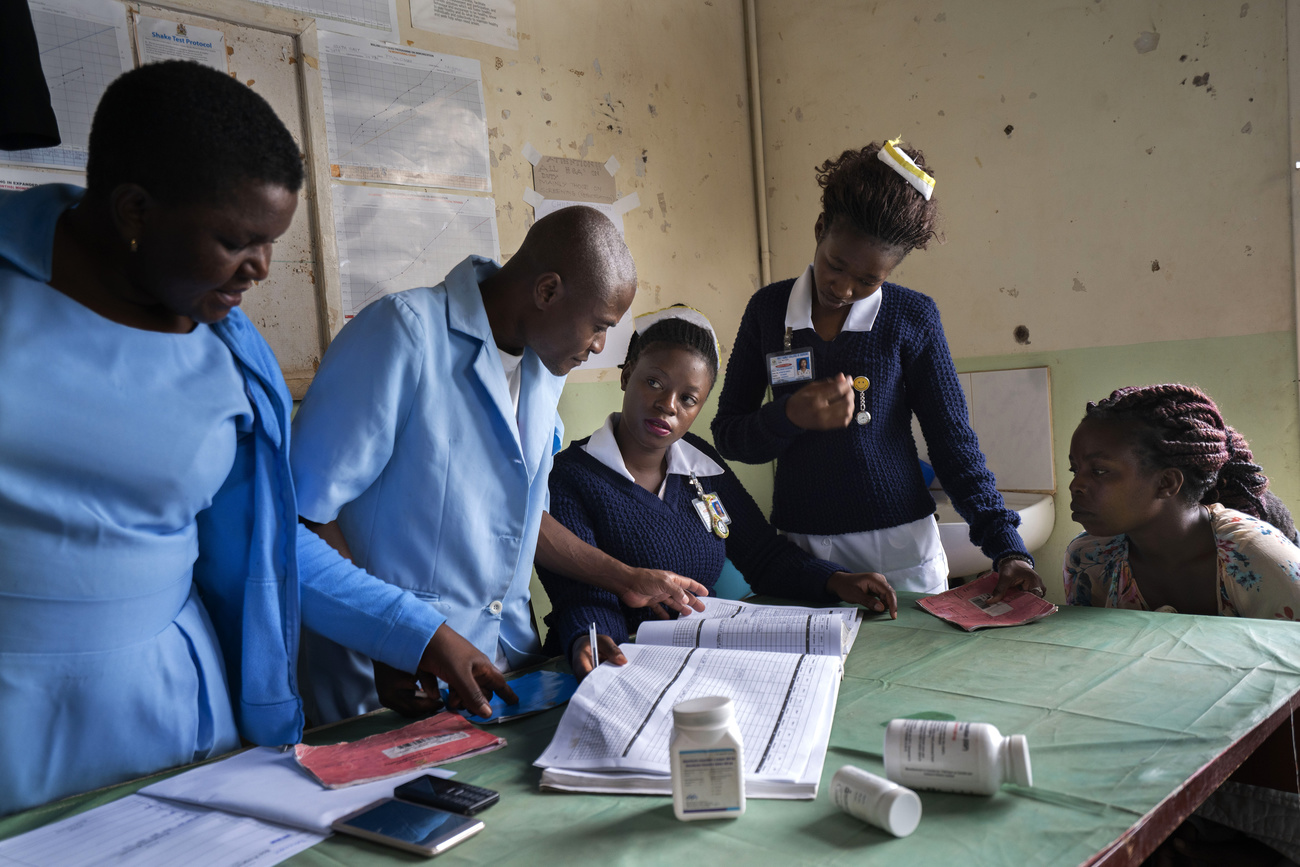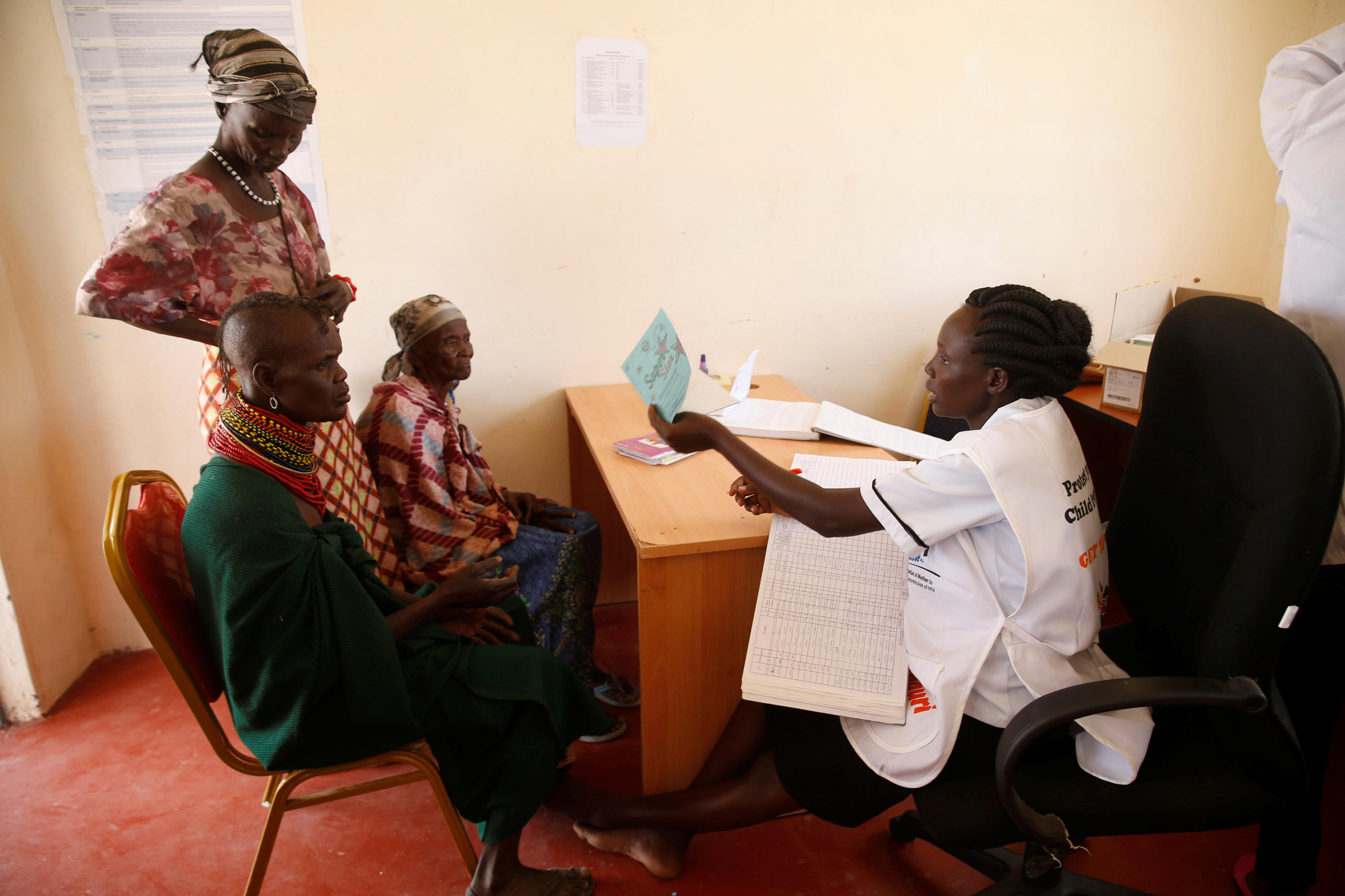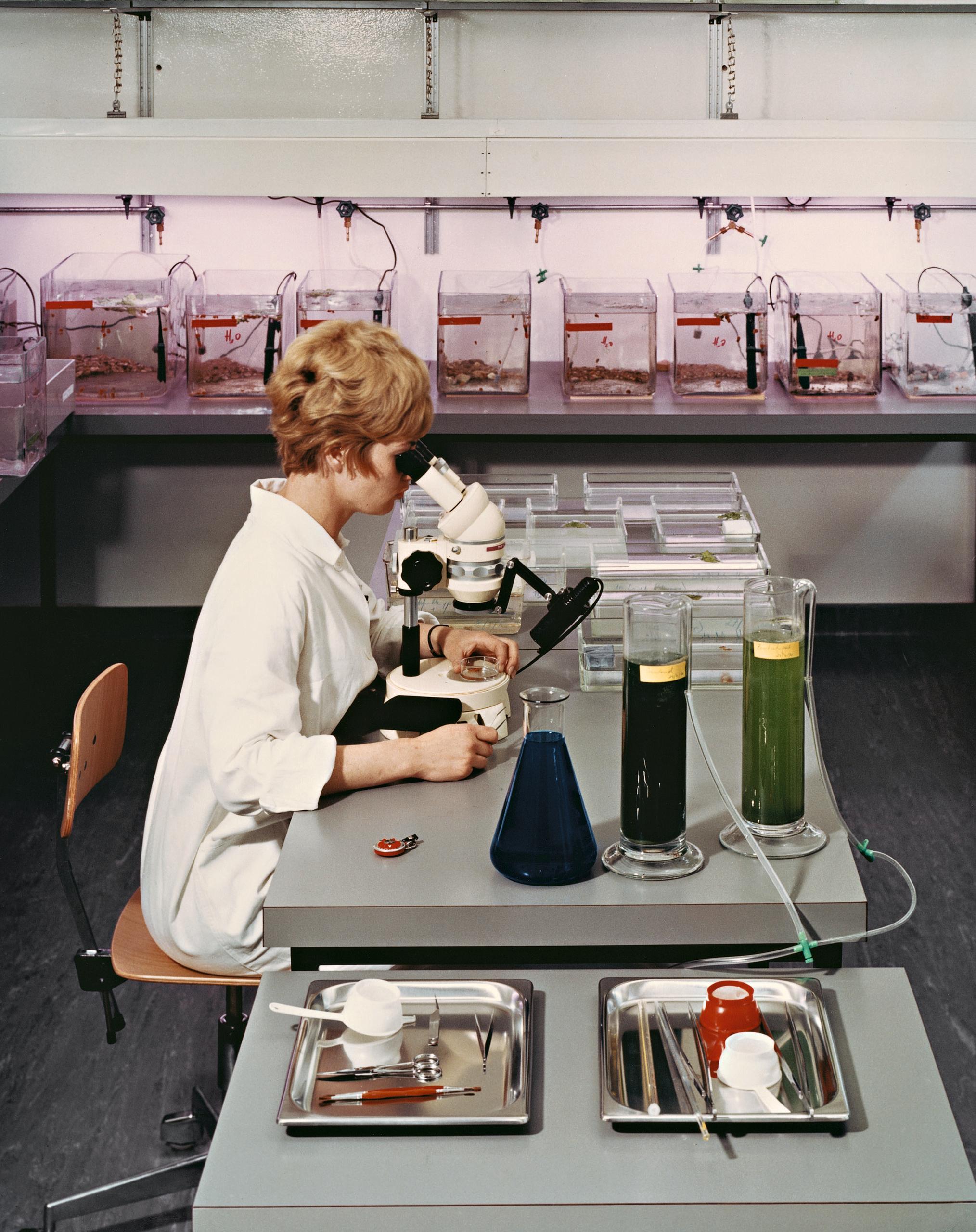
Can Novartis’s sustainability-linked bond make good on its promises?

Novartis’s sustainability-linked bond launched in late 2020 was a world first for the pharmaceutical industry. But not everyone is convinced by its purported aim of making drugs more accessible to the world’s poor.
In September 2020, Swiss pharma giant Novartis became the first pharmaceutical company to issue a sustainability-linked bond (SLB) and only the third in the world to offer the new debt instrument. But unlike the first two companies, which linked their bonds to environmental goals, Novartis tied its €1.85 billion (CHF1.95 billion) bond to social targets in its core business of making and selling medicines.
These involve increasing the availability of certain drugs in low-income and lower middle-income countries, a concept known as access to medicines. Failure to achieve the targets triggers the payment of a penalty interest rate to bondholders.

More
Banks urged to think green or face extinction
Linking innovation and access to medicines with measurable targets “and then backing those measurable targets with a financial commitment to me is a very strong signal that… it’s something we are very serious about and we are willing to financially commit to,” Lutz Hegemann, group head of corporate affairs and global health at Novartis, said during a discussion of the company’s environmental, social and governance (ESG) strategyExternal link posted on YouTube in November.
But critics point to a lack of transparency in the targets and their measurement, and question whether the bond will drive genuine improvements in access to medicines. These issues are fuelling concerns that Novartis’s SLB will become an exercise in ticking the boxes for ESG investment for the company, shareholders and bondholders.
With more pharma companies following in Novartis’s footsteps, there are growing calls for better accountability.
Novartis listed the bond on the SIX Swiss Exchange on September 23, 2020. It raised just under €1.85 billion, about 31% of the bonds issued by the company in 2020 and around 8% of its outstanding bond debt. The SLB was priced at a discount, at 99.354% of its face value, which is common for euro bond issuances. The bond, which matures in 2028, carries a 0% interest rate but if Novartis fails to reach one or both of its 2025 Patient Access Targets, a penalty interest rate of 0.25% a year will be paid from 2026 until maturity. Novartis is required to publish an ESG report annually until and including 2025, and has the option to redeem the bond at any time after the 2025 report is published.
A booming market
The ESG debt market started in 2007 when the European Investment Bank sold the first green bond. Since then issuance has soared, surpassing $1 trillion in 2021, more than double the amount sold the previous year, according to data compiled by the Environmental Finance Bond Database. While that was only around 11% of total global bond issuanceExternal link for 2021, ESG debt is no longer on the sidelines, as a growing number of mainstream institutional investors such as BlackRock Inc., the biggest single holder of Novartis’s SLB, integrate sustainability into their investment strategies.
Most ESG debt issuance is made up of green bonds, but SLBs have been the fastest-growing segment since Italian energy company Enel SpA launched the first one in 2019. SLB sales surgedExternal link from $8.8 billion in 2020 to $93 billion in 2021.
More than 50 SLBs have been sold since 2019 according to the Zurich-based International Capital Markets Association (ICMAExternal link), a trade association and self-regulatory group whose aims include promoting high standards and regulation across the world’s capital markets.
Sustainalytics, which provides ESG research, ratings and data, reviewed two to three SLBs a week in 2021, Zach Margolis, a manager at the firm, told SWI swissinfo.ch. The Toronto-based company provided an external assessment of the Novartis bond’s structure and targets, known as a second-party opinion.
SLBs open up ESG investing “to a whole new set of companies that might not have large capital spends or deep green projects, but still want to demonstrate their sustainability commitments and are still willing to put their dollars behind it,” says Margolis.
The ICMA recommends that ESG bond issuers “appoint external review provider(s) to confirm the alignment of their bond” with the association’s principles. There are different types of external reviews including verification, certification, ratings and second-party opinions. The ICMA has established guidelinesExternal link on best practices for conducting external reviews.
To align with the principles, issuers should seek and publish an independent and external verification of their performance against the targets set out in the bond prospectus on an annual basis. The SLB principles also recommend at least one second-party opinion is obtained before the bond sale. An opinion should be provided by an independent institution with expertise in ESG that can assess the relevance, robustness and reliability of selected key performance indicators (KPIs) and targets.
Swiss building materials company Holcim issued the industry’s first SLB in November 2020 and sold two more in January 2022. French luxury fashion house Chanel sold a similar bondExternal link tied to carbon reduction targets in September 2020, while in November 2021 Israel’s Teva Pharmaceuticals became the first manufacturer of generic pharmaceuticals to issue an SLB, which it linked to access to medicines and climate goals.
Investors are hungry for more. “There is intense investor demand for these kinds of bonds and structures,” says Margolis. “There’s just not enough ESG-themed issuances out there to satisfy the demand. Many large investors, pension plans, funds of various kinds have explicit mandates to make their portfolios more sustainable. And this is one way they can do it.”
More
Unlike green bonds, funds raised via SLBs don’t have to be spent on anything social or environmental. Borrowers commit to achieving targets on environment or social issues within a specific time frame but don’t have to specify how they will spend the proceeds – Novartis’s prospectus indicated the money could be used to refinance some of its debt.
“You don’t have to provide any visibility of where you’re spending the money, your only obligation is to hit the targets,” says Paul O’Connor, who heads the ESG Debt Capital Markets division in Europe at JPMorgan Chase, which was the sole structuring agent of the Novartis SLB. “And if you don’t hit the targets, the interest rate steps up.”
Blank check?
With no obligation to disclose how the proceeds are spent, the credibility of SLBs rests on the quality of the indicators and targets selected, which, according to the ICMA’s voluntary principlesExternal link, should be relevant, measurable and ambitious. They should ideally be based on benchmarking against peers or an external reference.
Identifying standard metrics is easier in some environmental areas where there are science-based targets like greenhouse gas emissions that contribute to goals in the Paris Climate Agreement. But there aren’t the same kind of globally agreed metrics to evaluate change in access to medicines.
Novartis’s bond focuses on expanding what it refers to as patient reach for certain medicines in low-income and lower middle-income countries and sets targets to be reached by the end of 2025.
1. Expand the reach of its flagship programmes to at least 22.6 million patients in 2025 compared with the baseline year of 2019, an increase of at least 50%. The programmes include four infectious or neglected diseases: malaria, sickle cell disease, leprosy and Chagas cardiomyopathy.
2. Expand the reach for self-designated strategic innovative medicines to at least 1.64 million patients in low-income and lower middle-income countries in 2025 from 2019, an increase of at least 200%. The medicines are not listed in the bond prospectus but Novartis told SWI swissinfo.ch they include 18 of its on-patent medicines largely focused on cancer and other non-communicable diseases, such as Aimovig for migraines, Cosentyx for psoriasis, and Kisqali for breast cancer.
The problem is how to measure patient reach. In its bond prospectus, Novartis acknowledges there are no standard metrics, but it has chosen to use a formula that divides total sales volume by volume per patient, which is based on the assumed standard therapy regimen such as the number of pills or injections for an average patient.
However, patient reach and volume sales per patient have been heavily criticised by public health experts.
“There is a push within the industry to come up with a very simple set of a small number of metrics, and patients reached is one of those metrics that pharma companies would like to be able to roll up or aggregate,” says Peter Rockers, an assistant professor in the Department of Global Health at Boston University, who was involved in an evaluation of a Novartis programme to make a basket of medicines available in Kenya. “When your goal is to simplify, and eliminate all that complexity, what you end up with are metrics that might not mean much or it’s unclear what they mean.”
Even the Access to Medicine Foundation shies away from using the term patient reach and doesn’t include volume sales per patient in its regular rankingExternal link of companies. Instead, the Amsterdam-based non-profit organisation, which lobbies pharmaceutical companies to do more for the world’s poor, uses a scorecard comprising 33 metrics such as how much research investment is dedicated to diseases more commonly found in poorer countries.
Companies have different types of products and disease areas of expertise, and that makes it hard to compare the ambition of a metric like patient reach with peers, explains Marijn Verhoef, the director of operations and research at the foundation, which also gave a second-party opinion on Novartis’s SLB. “There’s no one golden standard for a KPI [key performance indicator] that companies can apply.”
Another criticism of the patient reach metric is that sales doesn’t necessarily equate to reach, especially given distribution and affordability problems for many of the world’s poorest people. In its bond prospectus, Novartis acknowledges the limitations, stating that some factors are out of their control such as local pricing and reimbursement policies, supply continuity, among others.
Figures released by Novartis about its performance so far also raise questions about the validity and integrity of the targets.
The baseline for the flagship programmes was 2019, a year that patient reach slumped by almost half to just over 15 million, a drop the company attributed to a dramatic fall in sales of its malaria treatment Coartem because of a surge in sales of rival generics. Patient reach recovered strongly in 2020 to 43.9 million, almost double the 2025 target, and despite a fallback in 2021, it was still well above target at 32.6 million. Novartis attributed the overturn to a “change in our key account management strategy” and “our ability to serve special demand against the backdrop of the Covid-19 pandemic”. A spokesman told SWI swissinfo.ch in November that the company expects that as the situation returns to normal, competition from generics will “pose potential future challenges” to achieving the target in 2025.
Lack of transparency
Performance of the two targets is also not reported publicly on a per medicine, disease area or country level. The company lists 152 countries under its patient reach target although the World Bank definitionExternal link of low and lower-income countries includes 82 countries and excludes China, one of the biggest growth markets. This makes it difficult to tell if the medicine is being sold to people who would have struggled to have access otherwise.
Novartis has acknowledged that measurement is still in a nascent phase. “We have to realise that this rigour of information disclosure doesn’t exist. We want to be transparent so we communicate what we believe is relevant and important for others to know,” Hegemann said in November’s discussion. “But we would be very happy to use a validated system that puts our efforts to the test and gives greater transparency here.”

More
Can Novartis really make its medicines available to everyone?
These ambiguities are among the reasons why Stephen Liberatore, lead portfolio manager for fixed-income ESG and impact investing strategies at US asset management firm Nuveen, decided against buying the SLB. There wasn’t enough transparency to show that patients who wouldn’t otherwise benefit really would be helped by the bond’s targets, he told SWI swissinfo.ch.
Liberatore also took issue with the targets themselves based on Novartis’s historical performance. “What I struggled with is the aspirations and incentives behind the bond,” he said, noting that the target growth rate for increasing patient reach in strategic innovative therapies was slower than what had been achieved before the 2019 baseline.
The bigger picture
Others take a more positive view about what Novartis is attempting to achieve. Verhoef, from the Access to Medicine Foundation, said that while one could criticise the company for how it is equating sales with patient reach, it is a step forward that investors are becoming part of the global health discussion.
The focus on selling more medicines rather than solely on profit is a “positive shift,” he said. “A substantial increase in volume will mean an increase in patients reached.”
Novartis ranked second in the most recent Access to Medicine Foundation Index, and it was the first major company to integrate access to medicine for the poorest into the launch of all new products.
ESG investment experts interviewed by SWI swissinfo.ch acknowledged problems with the selection and measurement of the targets but chalked some of it down to the learning curve that affects any new product, especially one that’s grown as rapidly as SLBs.
“You need to look at the big picture,” said Maximilian Martin, an expert in social finance and global head of philanthropy at Swiss bank Lombard Odier Group. “It’s very early days with these bonds. I think if we had this conversation five years from now, we would have a much better view of what else has happened with the issuers and how to roll this out and measure it.”
As the market for SLBs grows, some investorsExternal link are scrutinising the debt instruments with a more critical eye. British retailer Tesco was called out for being 83% of the way to reaching its carbon emissions target before launching its first SLB. When Teva sold its SLB in 2021, some investors complained there was too little transparencyExternal link into how the proceeds would be used and only mild consequences if the company fell short of its sustainability objectives.
Some investors prefer to buy ESG bonds that specify the use of proceeds because they want visibility on what investments are being made, says O’Connor from JPMorgan. “Other investors don’t have the ability to spend time analysing these things, and they just want something that’s simple to understand in terms of impact.”
But overall, investors are becoming more discerning, he says. “They want tighter definitions on what constitutes green and social,” he says.
In an articleExternal link published in May, Liberatore wrote that he was compelled to alert investors about SLBs. “The goals or targets can be gamed to make them relatively easy to achieve, sometimes based on the issuer’s current trajectory, and without the need for meaningful new investment,” he wrote.
For such a bond to work, he says, there has to be clear ambition and real incentives. “Our problem is not with the concept of an SLB but we have an issue with the execution,” Liberatore told SWI swissinfo.ch. “We still haven’t been able to find an SLB that is aligned with how my group invests.”

More
Swiss pharma reckons with its past, present and future
External linkEdited by Nerys Avery.

In compliance with the JTI standards
More: SWI swissinfo.ch certified by the Journalism Trust Initiative






























You can find an overview of ongoing debates with our journalists here . Please join us!
If you want to start a conversation about a topic raised in this article or want to report factual errors, email us at english@swissinfo.ch.